Understanding how to drain a washing machine is a crucial skill for any homeowner. Whether for routine maintenance or unexpected emergencies, this knowledge ensures a smooth-running laundry routine.
Proper washing machine drainage is a fundamental aspect of appliance maintenance that often needs to be noticed. In this guide, we'll walk you through the steps in clear, straightforward terms, making it accessible for everyone.
From primary home laundry care to essential washer emergency procedures, you'll gain valuable insights into this vital aspect of household management.
Don't underestimate the importance of this know-how—it can save you time, money, and unnecessary stress in the long run. Let's dive into the world of effective draining of washing machines.
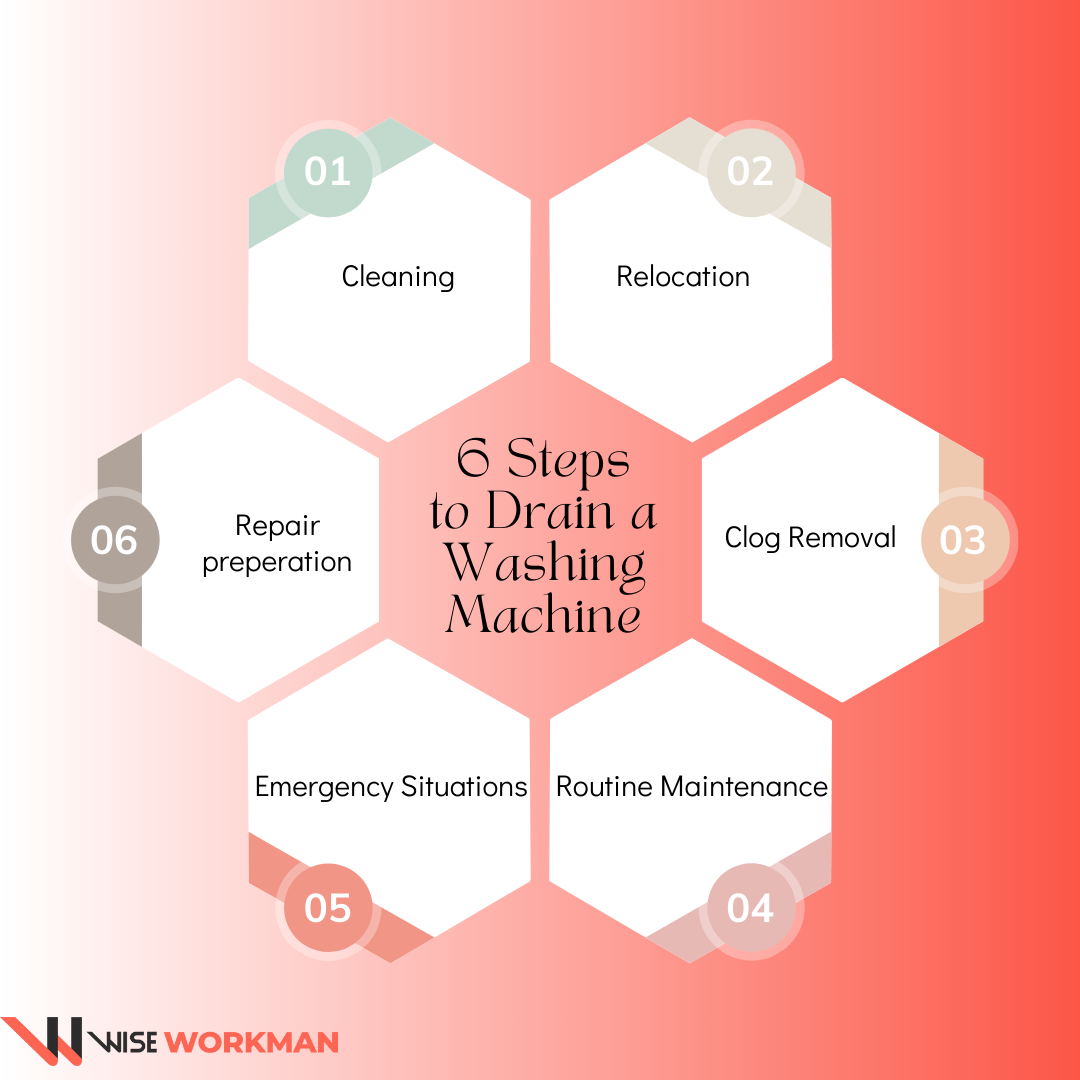
Mastering the art of draining a washing machine is pivotal in ensuring its longevity and optimal performance. Let's look into the various scenarios where this know-how proves indispensable:
Over time, detergents, lint, and grime residue can accumulate within the machine's drum and drainage system. This buildup can hinder proper functioning and even lead to unpleasant odors. The washer machine drain process provides a clean slate, allowing you to eliminate these deposits effectively.
Are you planning a move? Safeguard your washing machine from potential water mishaps during transportation. Draining it beforehand prevents leaks and lightens the load, making the entire moving process smoother and more convenient.
Persistent clogs are a common woe in washing machines. They obstruct the drainage system, resulting in stagnant water. By mastering the technique of draining, you equip yourself with a practical solution for dislodging and removing these obstructions, ensuring your machine operates at peak efficiency.
Just like any other appliance, washing machines benefit from regular upkeep. Periodically draining it is a proactive measure to ward off mold, mildew, and mineral deposits. This simple practice maintains the machine's cleanliness and functionality, contributing to its prolonged lifespan.
Imagine discovering an unexpected leak or malfunction. Knowing how to promptly drain the washing machine is imperative in such critical moments. It's the first line of defense against potential water damage, allowing you to take swift action and prevent further complications.
Before starting on any maintenance or repair task, it's essential to begin with a drained machine. This ensures your safety and facilitates a more effective and focused approach to resolving any underlying issues.
Equipped with this knowledge, you're poised to tackle various washing machine scenarios confidently and efficiently. Regular draining is a small yet impactful step toward a seamlessly functioning appliance that is not only a regular upkeep task but also that the washer and dryer last longer.
Stay ahead of common washer issues by incorporating this practice into your routine—it's a surefire way to make laundry a breeze!
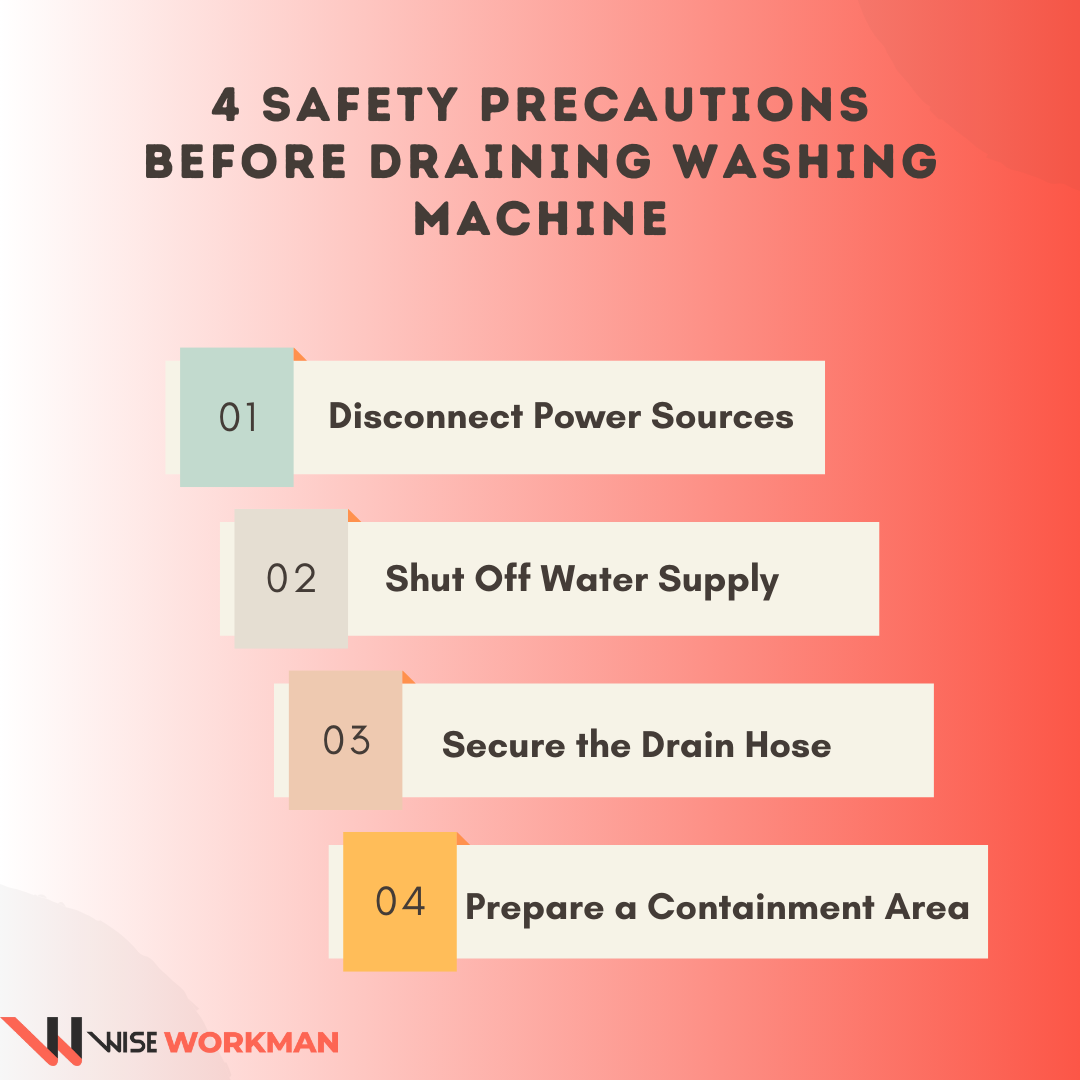
Before you begin the process of draining the washing machine, it's imperative to prioritize safety. Following these essential precautions will protect you from potential hazards and ensure a smooth and incident-free task.
By diligently following these safety measures, you create a secure environment for executing how to drain a washing machine. These precautions protect you from potential electrical and water-related hazards and contribute to a successful and hassle-free maintenance task.
Always prioritize safety to ensure a smooth and incident-free experience.
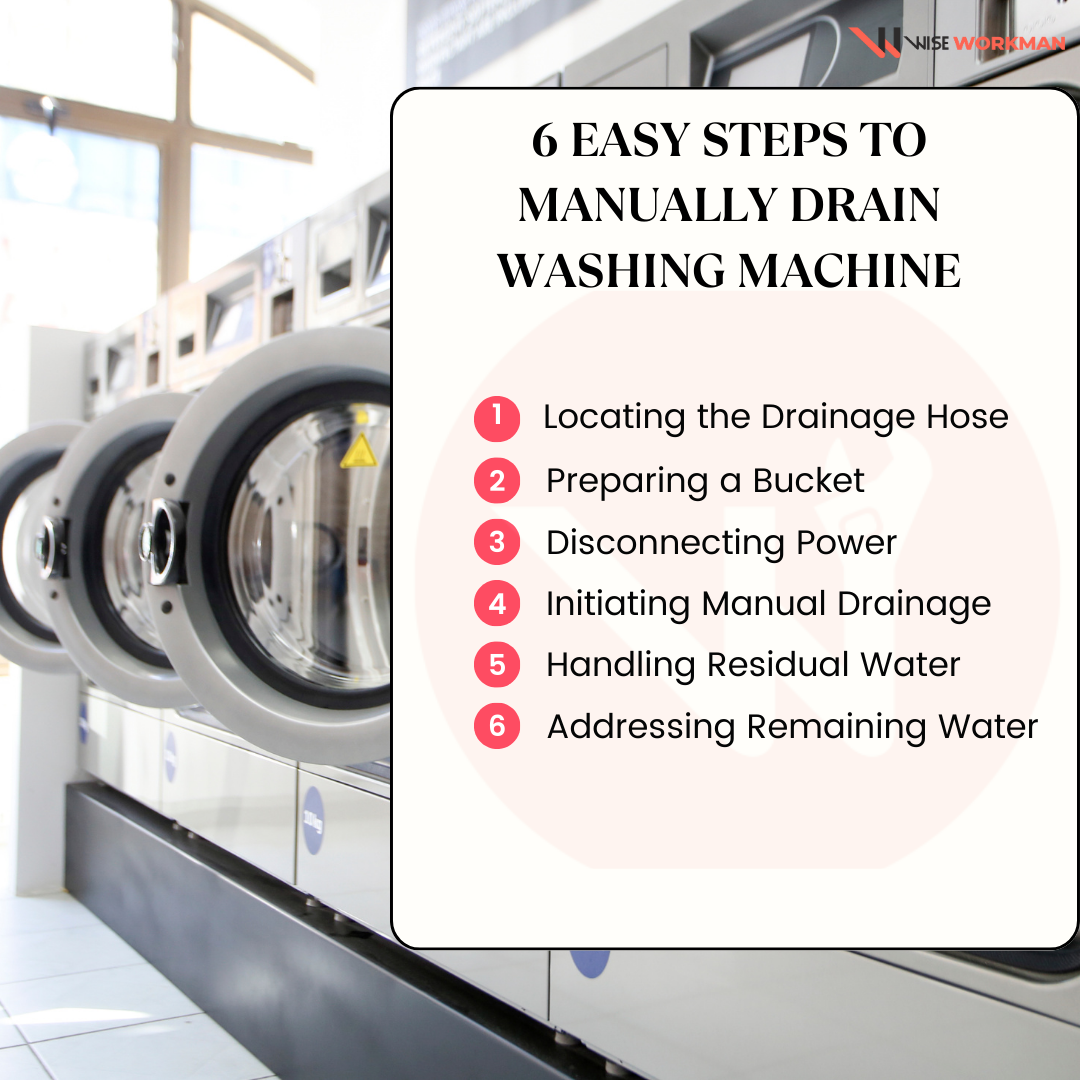
Knowing how to manually drain a washing machine is vital for every homeowner. This process comes in handy, especially in situations like relocating or addressing drainage issues.
Here, we'll guide you through the step-by-step manual drainage process, from locating the drainage hose to handling residual water.
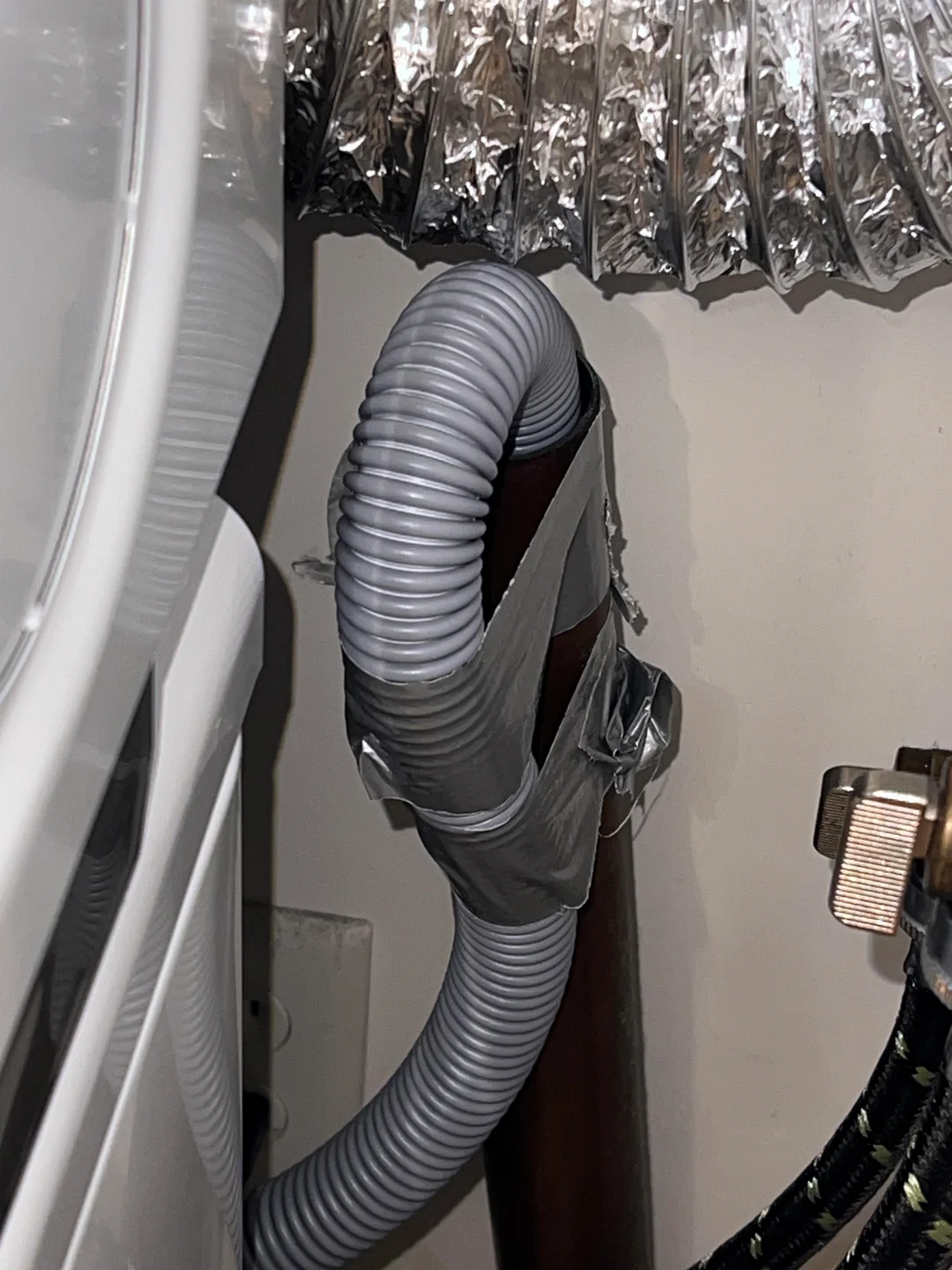
Begin by identifying the drainage hose, which is typically located at the rear of the machine. To drain front-load washers, familiarize yourself with their specific placement to avoid accidental jerking or tangling.
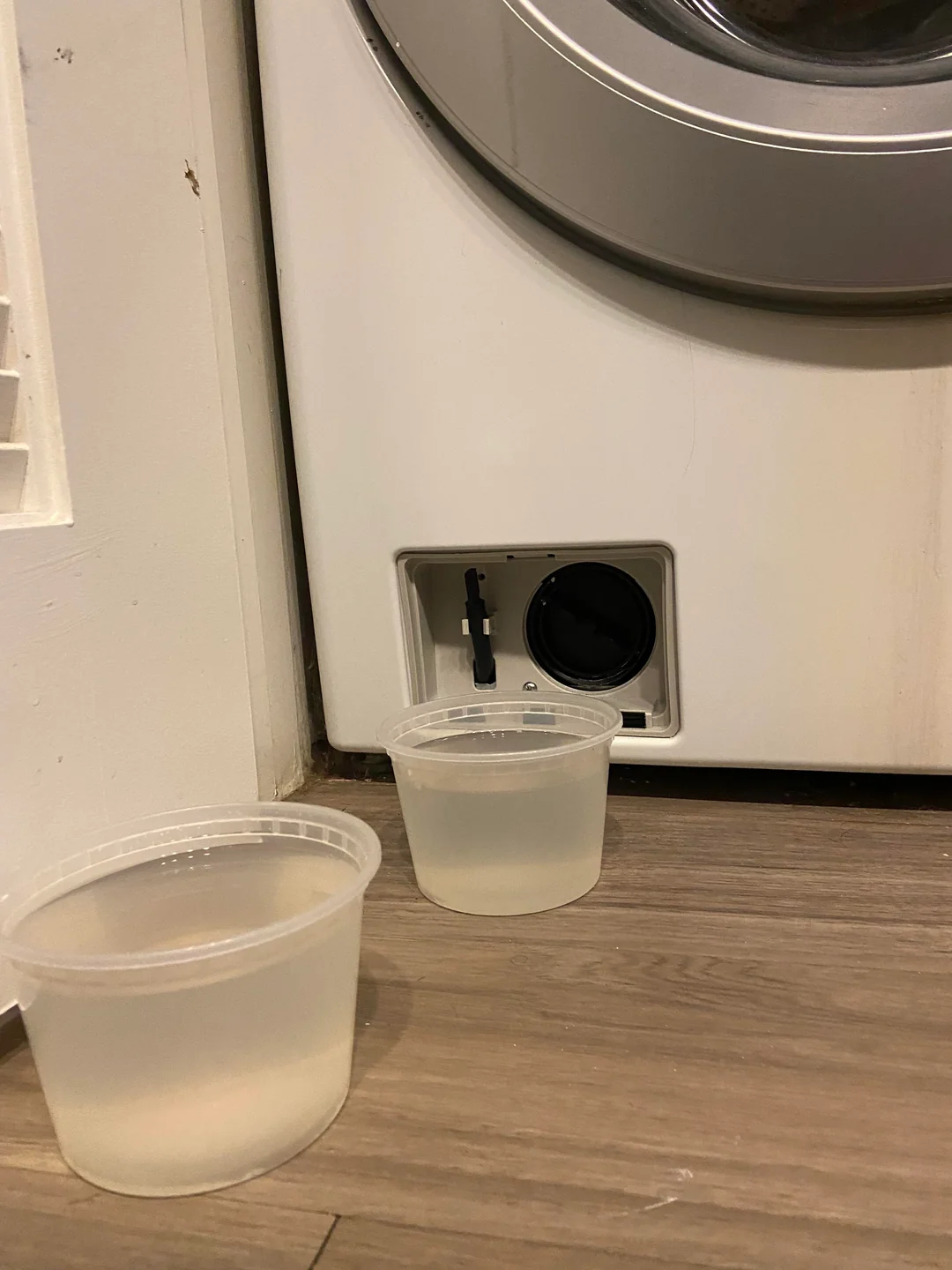
Place a sturdy bucket or container near the washing machine to collect the discharged water. Ensure it has enough capacity to hold the volume of water expected.
Unplug the washing machine from its power source before any manual drainage. This is essential for safety, preventing any electrical mishaps during the process.
Gently detach the drainage hose from the washer, allowing water to flow into the bucket. Be prepared for residual water to discharge, and adjust the bucket's position as needed.
Carefully tilt the machine forward once the initial flow subsides to access any remaining water. Direct this water into the bucket to ensure thorough drainage.
If there's still water in the drum, manually scoop it out or use a sponge to absorb it. This step guarantees complete drainage.
By following these steps, you manually drain your washing machine, a skill that is invaluable in various situations. Whether you're moving or troubleshooting drainage issues, this process ensures your machine is ready for its subsequent use.
Keep in mind that regular maintenance, along with knowing how to drain a washer, significantly extends the lifespan of your appliance, answering the question of "how long does a washing machine last."
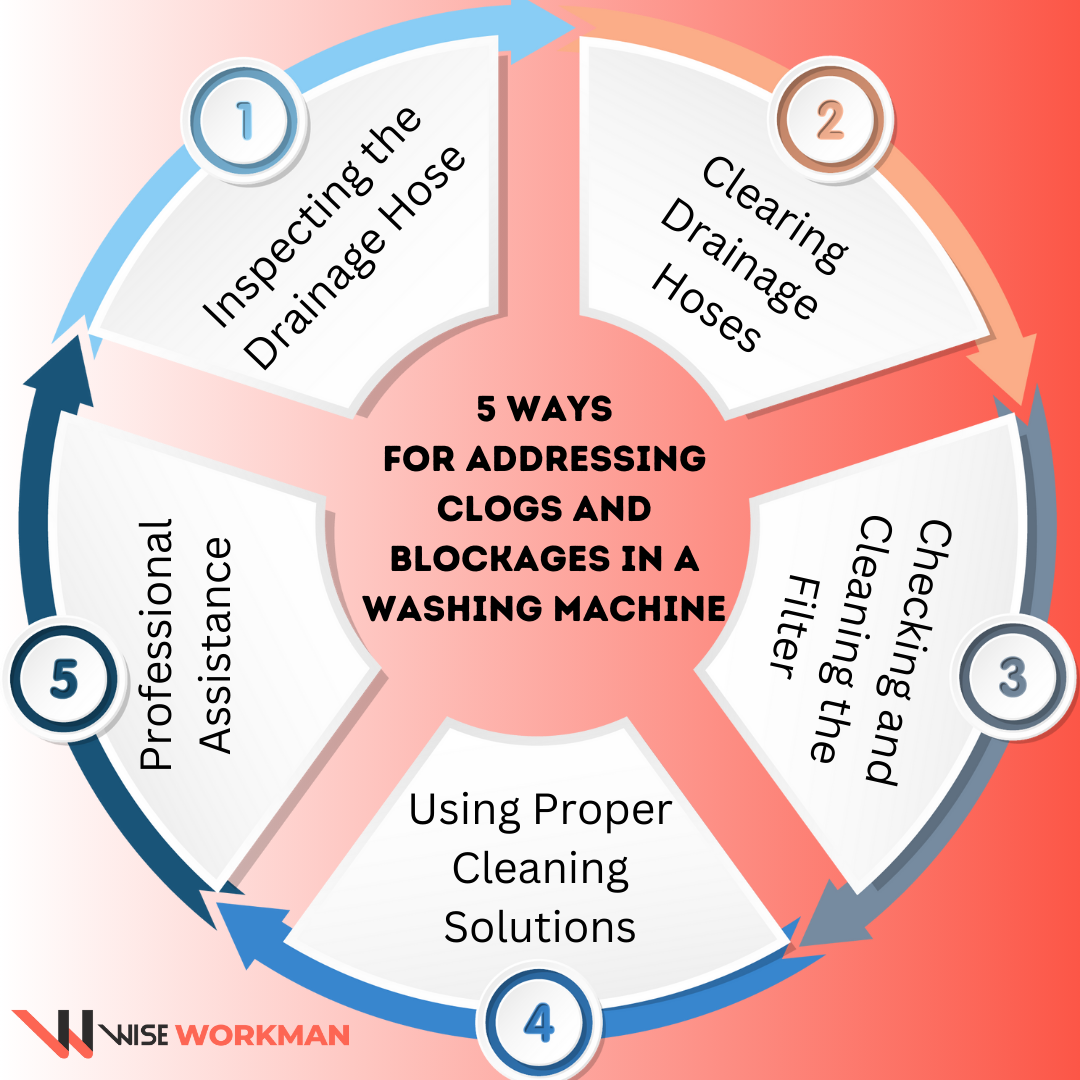
Encountering a clogged washing machine drainage system can be a frustrating experience. However, understanding how to address these blockages effectively is essential for the proper functioning of your appliance.
This guide will provide detailed instructions on troubleshooting and cleaning common areas prone to clogs, such as drainage hoses and filters. Remember, seeking professional assistance is the best course of action if the issue persists or appears complex.
Begin by finding where is the drainpipe on a washing machine. The drainage hose is usually located at the back of the washing machine.
For front load washers or if you are in the process of how to drain a whirlpool washer, take extra care to avoid wrenching or entangling the hose during the inspection. A clog in the drainage hose is a common culprit for drainage issues.
If you find a blockage, use a straightened wire hanger or a pipe cleaner to remove the debris carefully. Ensure the hose is free from any obstructions that may impede water flow.
Many washing machines have a filter designed to trap lint and dirt remains. Regular maintenance of this filter is crucial. Consult your machine's manual to locate and clean it. This step is particularly important for front-load washers, as their design makes them more susceptible to clogs.

For stubborn clogs, consider using washing machine-specific cleaning solutions. Follow the manufacturer's instructions to clear the blockage effectively.
If the issue persists after following these steps, or if you need clarification on any aspect of the process, it's advisable to seek help from a professional. They have the expertise and tools to diagnose and resolve complex drainage problems.
When it comes to efficient laundry appliance care, understanding how to drain a washing machine stands as a foundational skill. This knowledge empowers homeowners to tackle routine maintenance, address emergencies, and prevent common issues.
By following the steps outlined in this guide on how to drain a washing machine, you've taken a significant step toward optimizing your appliance's performance.
Regular maintenance, including cleaning the drainage hose, inspecting filters, and checking for blockages, is essential for preventing drainage problems. Taking these proactive measures extends the life of your washing machine and ensures it operates at peak efficiency.
Additionally, knowing how to manually drain a washing machine is a valuable skill that comes in handy during relocations or troubleshooting drainage issues. Always prioritize safety by disconnecting power sources and shutting off water supplies before commencing any drainage process.
In conclusion, proper washing machine drainage is the cornerstone of efficient laundry care. Armed with this knowledge, you're equipped to navigate various scenarios, from routine maintenance to addressing unexpected situations.
Keep these practices in mind to ensure your washing machine serves you well for years to come.